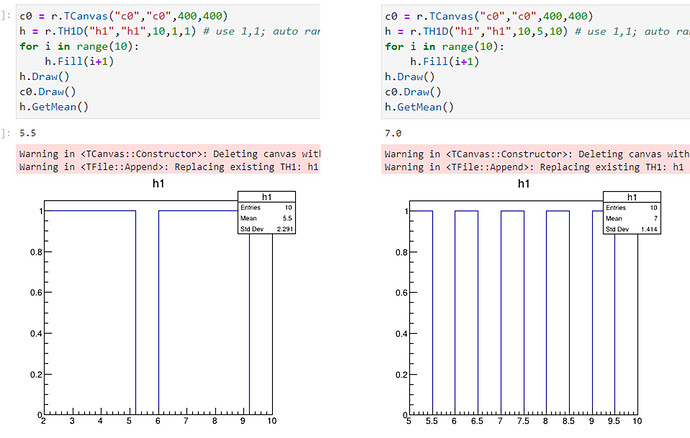Yes, I used TH1::GetMean() and TH1::GetStdDev() ,and TH2::GetCovariance() as well.
My code are quite long, let me take some time to extract the key steps …
meanwhile, I can provide a simple test that demonstrate this behaviour (that seems to be contradicting the independence of the statistics on the binning), see the atttached figure.
